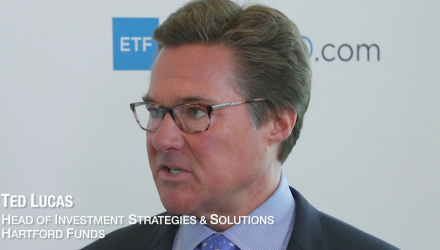As the exchange traded fund community matures, more investors are branching out from traditional market cap-weighted index strategies, looking into smart beta or factor-based investments that incorporate more customized indexing methodologies to diversify their portfolios.
“I think advisors, investors have become more comfortable with factor investing in general, and the virtue of multi-factor is to say we know factors go in and out of favor and by combining factors like say quality and low volatility, which are traditionally more defensive with more offensive factors – value, momentum, size – you can actually achieve portfolio exposure that can really work in multiple regimes,” Ted Lucas, Head of Investment Strategies & Solutions, Hartford Funds, said at Inside ETFs.
For example, investors can look to multi-factor ETF strategies such as the Hartford Multifactor Emerging Markets ETF (NYSEArca: ROAM), Hartford Multifactor Developed Markets (ex-US) ETF (NYSEArca: RODM), Hartford Multifactor US Equity ETF (NYSEArca: ROUS), Hartford Multifactor Global Small Cap ETF (NYSEArca: ROGS) and Hartford Multifactor REIT ETF (NYSEArca: RORE).
The Hartford ETFs screen components quality, momentum and value for more favorable risk-adjusted returns.
Specifically, the funds all share a security selection criteria broken by 50% value, 30% momentum and 20% quality. Additionally, the funds may also include the size and volatility factors where size refers to smaller companies historically outperforming and volatility covering companies that have exhibited a history of smaller swings. Some may argue these are factors that show up in many single and multi factor ETFs, but it is the way a company combines them that helps differ their strategies from the competition.
By combining the factors, the Hartford smart beta ETFs may potentially improve return beyond traditional benchmarks, lessen unintended concentration risks and increase intended exposures to targeted factors. The ETF wrapper helps provide the traditionally active management styles in a low cost, tax efficient and transparent structure.
For more ETF-related commentary from Tom Lydon and other industry experts, visit our video category.
